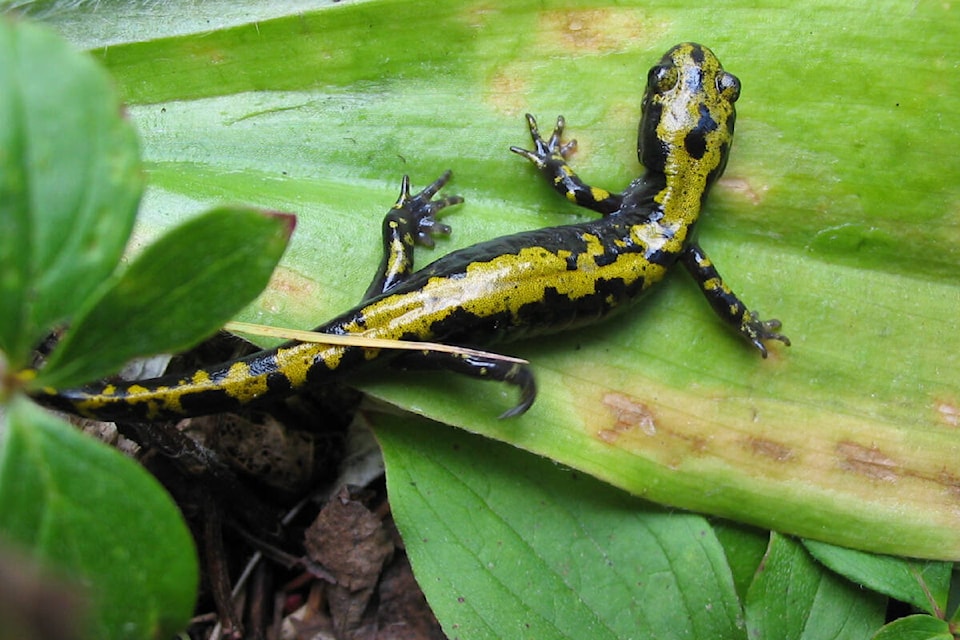Long-toed salamanders are on the move looking for a mate.
They breed just as the ice is melting on shallow ponds and puddles. All winter (and most of the previous year) they have been hiding underneath logs, rocks, abandoned burrows, rock piles and even in our crawl space – anywhere that is moist and cool.
When a male encounters a female, he will grasp her and rub his chin on her nose so that she will detect hormones in the secretions from his chin glands.
LAST WEEK: Lesser sandhill cranes
After a while he will swim away about one body length and deposit his spermatophore (a sac containing his sperm). The female will follow him and he guides her to pick up the sperm sac.
She will then lay her eggs and the sperm will release and fertilize the eggs. Eggs are laid singly, or in small groups, on pieces of vegetation.
Eggs hatch in two to three weeks. Larvae may take two years to mature in the north.
Somehow salamanders find their way up into our house where they get tangled in dust and cat hair. If we do not rescue them, they will gradually become dehydrated and die.
If you find one still alive, place it in a bit of water to moisten the skin and then carefully peel off the hair and dust and release the animal outside.
editor@interior-news.com
Like us on Facebook and follow us on Twitter
